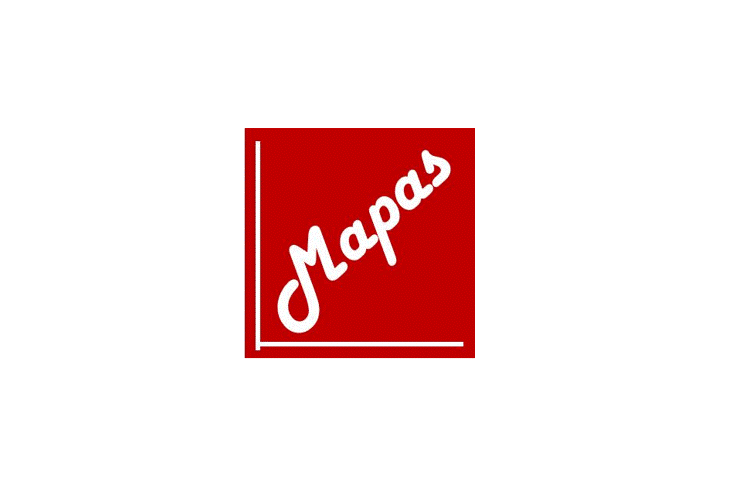Wardley Mapping is a model, an emergent practice that is not well established in the market.
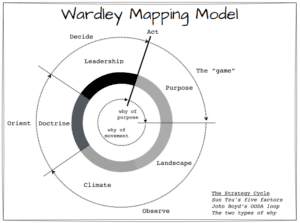
To learn about how to use it takes time and practice and there are many ways to do it.
Suddenly you decide to use it in your organization or with a client and you do not find any guide or experiences about how to do it.
By this reason we are working on the Wardley mapping framework.
This framework tries to gather the experience acquired after years of mapping and solving problems through mapping where the conversation is the center of all.
It works as a “bicycle training wheels” that help the mappers (riders) to use the model in their organizations. The training wheels act as a safety instrument for your reputation and as a guidance for enabling you to ride towards your goals. Once you feel comfortable riding, remove the wheels and ride with confidence wherever you want: You will be a reference in your organization.
The main components of the framework are drawn in red on the map: roles, events, maturity model, processes and good practices.
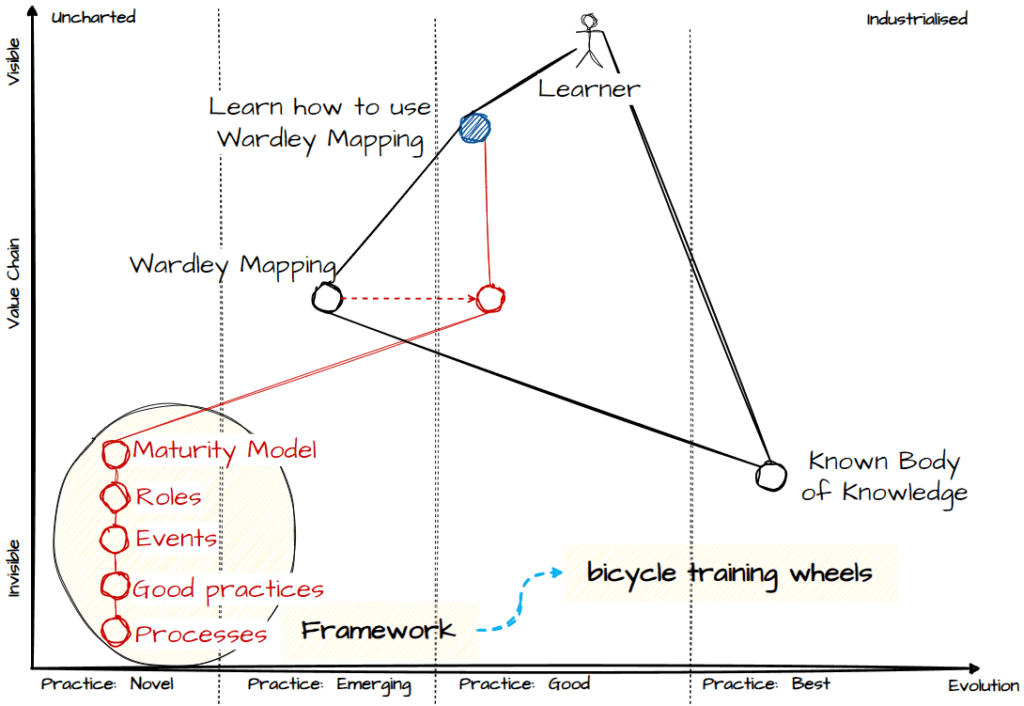
We use this approach to enable the people willing to use Wardley maps to feel safe and have a clear plan about how to drive this transition to work using Wardley maps. Once the rider is mapping in a comfortable way, we remove the training wheels and let the rider go by its own.
What does the framework contain?
The framework is a document that describes different scenarios and adoptions you can have on your organization at the time of using Wardley mapping in your organization.
Reading it, you will have a better view about how to use Wardley mapping.
If the guide results to be useful to you, the best thing you can do is to have a conversation with Joaquín and see how you can tailor the recommendations defined there into your reality: your organization. If you find the guide useful but you feel comfortable doing your own implementation, that’s fine!
Let’s take a quick look of the main components:
Events
We define some basic events that enable us to drive the strategic approach in a practical way.

Roles
Enable us to understand how how to act and work together.
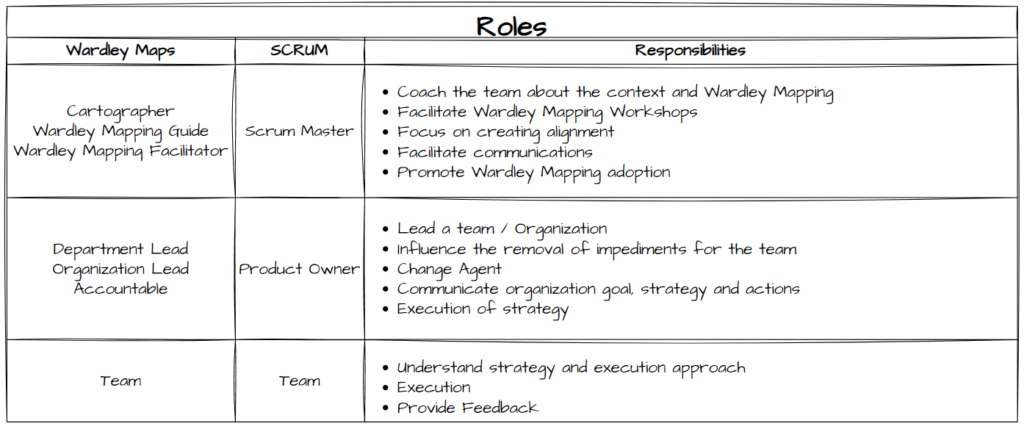
Maturity model
Enable you to understand the training needs you could potentially have and how to adapt it to the teams you have.
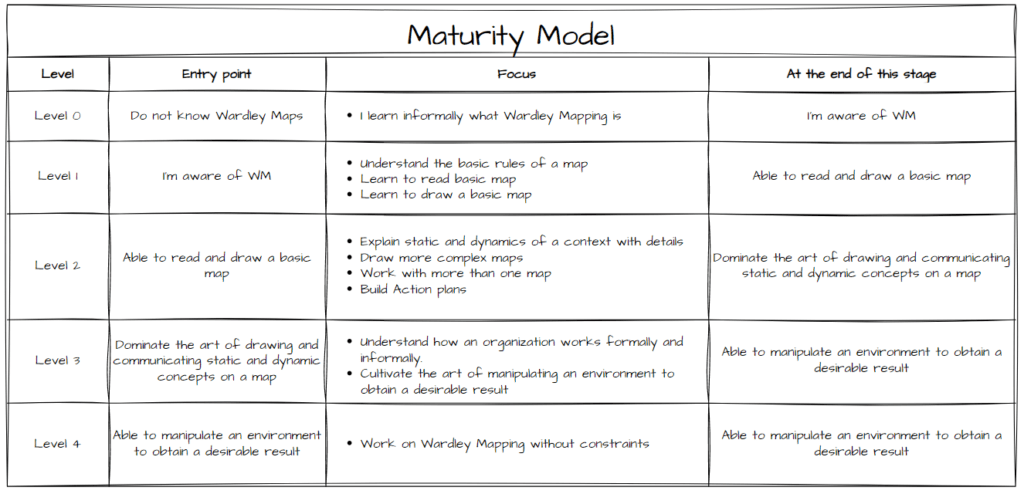
Good practices
Here there are different use cases covered and some practical guidance about concrete aspects, as for instance: the design of a workshop:
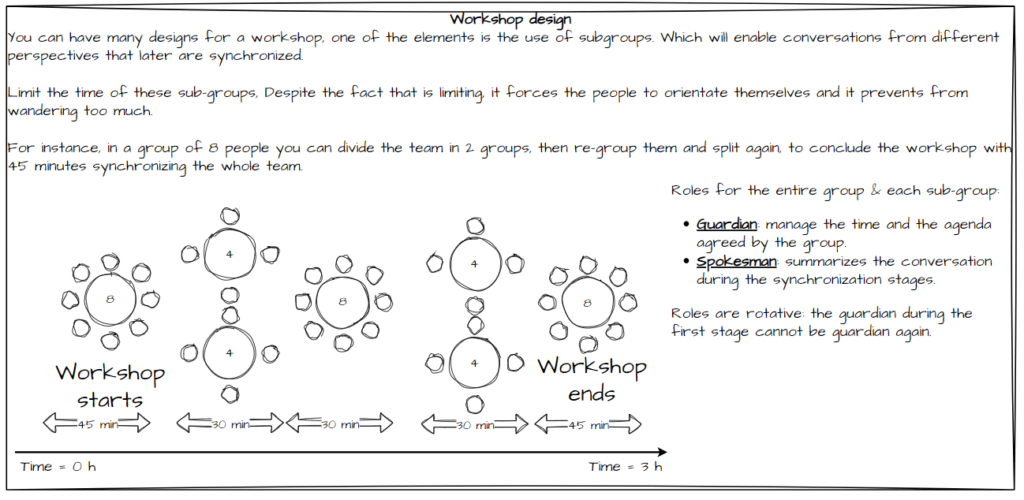
Processes
An structured way to handle workshops, where coherence, alignment and coordination is pursued. After the workshops we obtain an enriched vision of the transformations we are going to perform. It’s also a point base for future meetings (and do not start from scratch).
Main areas:
- Principles: about how the conversation can be done in a safety space + behaviors the organization/team has as group.
- Strategy: area where we walk through the different artifacts of Wardley Mapping.
- Execution: it’s the landing zone where actions are defined in alignment with the strategic decisions. The execution area is defined depending on the nature of the group of work.
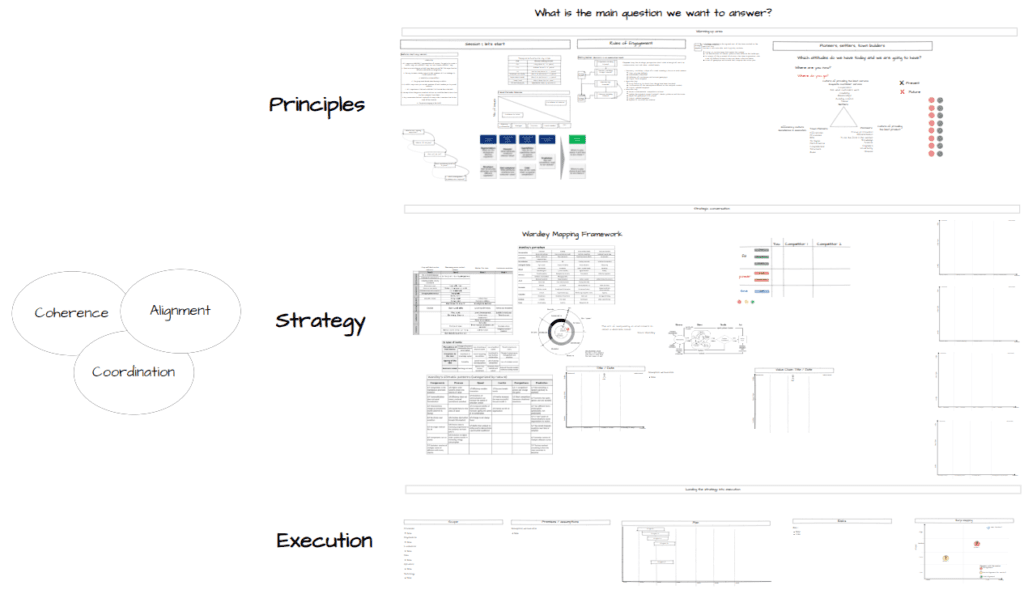
It’s a small guide that gives you a guidance about steps for getting different levels of expertise following the maturity level as reference.
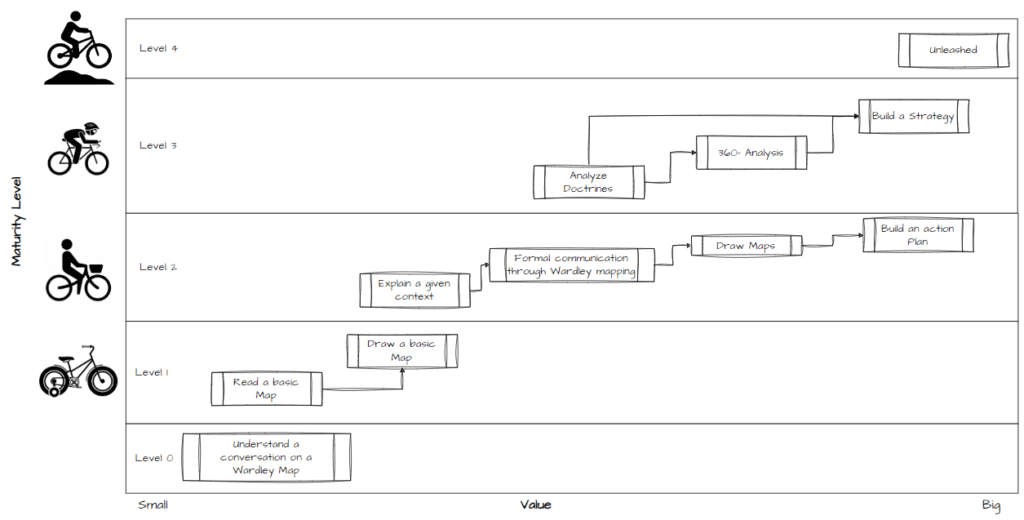
Does this sound interesting? write me at: joaquin@mapasllc.com.
